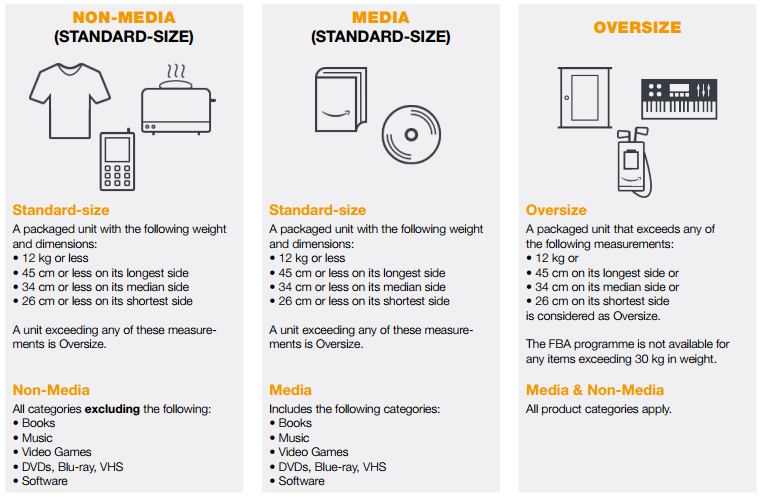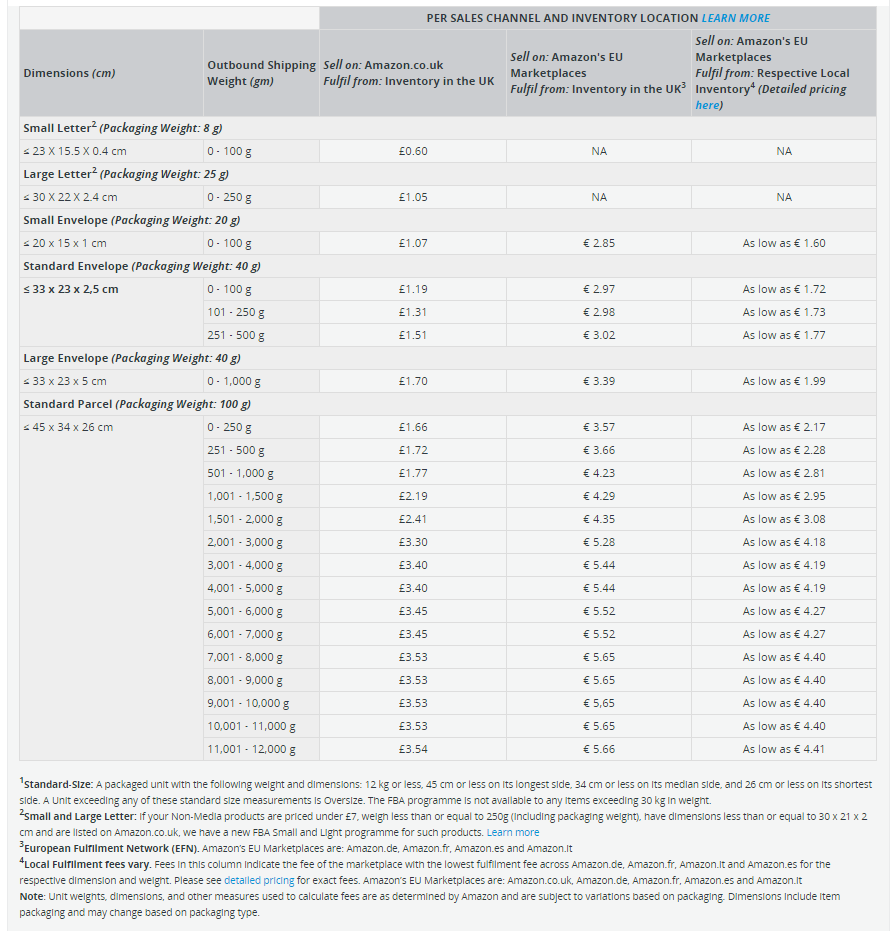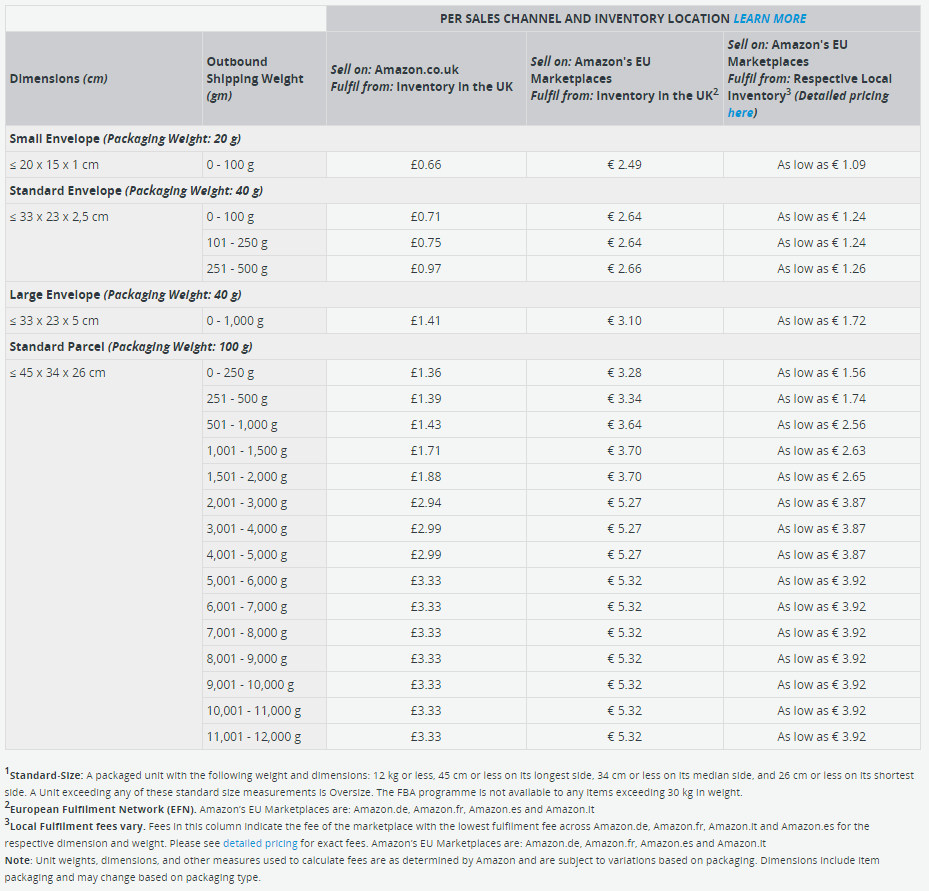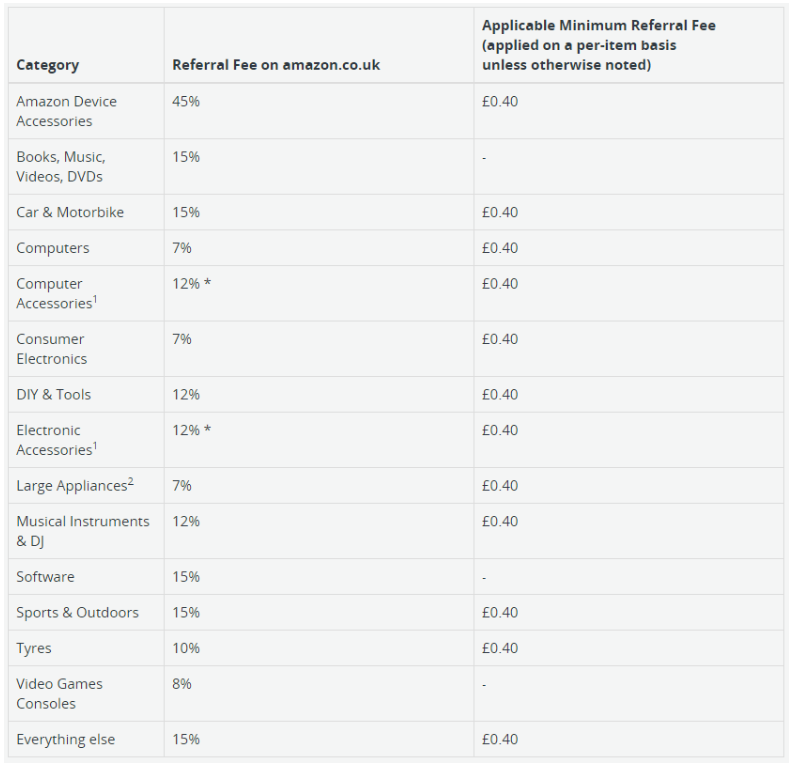Fulfillment by Amazon: do the benefits of FBA outweigh the fees?
While Fulfillment by Amazon, also referred to as FBA, is successfully used by businesses of all sizes, there are a number of factors you should be considering prior to using the program.
The fact is, FBA does of course come at a cost and you will need to assess whether the associated fees are viable not only for your business as a whole, but your individual products.
To help you determine whether it’s a good fit for your business, we have compiled the key benefits, as well as the fees for using FBA.
Benefits of using Fulfillment by Amazon.
There are some significant benefits to using FBA, notably the access to Amazon’s most loyal and active customer base – Prime customers.
In fact, around 71% of FBA users reported a 20% increase in unit sales since joining Fulfillment by Amazon. While this in itself is a huge incentive for using FBA, there are a number of other benefits including:
Fewer business operations
By using Fulfillment by Amazon, you essentially hand over the entire fulfillment process to Amazon, saving you valuable time to spend on other key business operations.
Enhanced customer satisfaction
The costs associated with FBA do also include Amazon’s acclaimed customer service offering.
This means that any questions related to fulfillment and delivery will be handled by Amazon’s customer support team, providing you with confidence that any queries will be handled professionally, on a 24/7 basis.
Faster shipping
The ability to offer next-day delivery when fulfilling your own orders isn’t always viable, but with FBA you can provide this easily and without any added stress to your usual operations.
As your FBA inventory will already be stored at an Amazon fulfillment center, they can process and ship your products quickly and efficiently.
Win the buy box
Due to FBA enabling next-day delivery and outstanding customer service, you are more likely to achieve Amazon’s Buy Box placement.
Calculating Amazon FBA fees
FBA fees typically vary based on two factors:The type of product you want to sell and the sales channel you are using to sell it.
Remember, unlike most fulfillment services, you can actually use FBA to fulfill your orders from other selling channels, whether that be another marketplace or your own eCommerce site.
With regards to the type of product you wish to fulfill through FBA, there are three different types; non-media products of a standard size, media products of a standard size or oversized products, in other words any product that exceeds standard measurements (full details for each can be found below). Please note that the fees outlined below will focus on UK pricing.

Fulfillment by Amazon fees will also depend on which channel you are selling through – Amazon.co.uk, Amazon’s EU marketplaces or on an external selling channel.
While the exact fee will depend on these two factors, it will always consist of both a fulfillment fee (a flat fee per unit based on dimensions and weight), as well as a storage fee (per cubic foot per month).
The charts below will give you an idea of the charges incurred for using this program. Please note that outbound shipping weight (gm)=your unit’s weight + Amazon’s packaging weight.
Amazon FBA fulfillment fee for non-media products

Amazon FBA fulfillment fee for media products

Amazon FBA fulfillment fee for oversized products

Amazon FBA storage fees for media, non-media and oversized products

The rate card for UK sellers using FBA can be found here. It’s also important to remember that all of these fees are exclusive of VAT and other taxes.
Standard Amazon selling fees will also be applicable and consist of both a Referral Fee and Variable Closing Fee.
Specifically, when selling on Amazon, you will be required to pay a commission for each item sold, which will be a percentage of the final value. This percentage will be dependent on product category and for most there will be a minimum fee of £0.40, unless otherwise stated below.

As an Amazon seller, you will also have to pay a variable closing fee for books, music, videos or DVDs.
While there is no monthly subscription cost for using Fulfillment by Amazon, you will have to pay to sell on Amazon, either by a monthly subscription fee which is suitable for professional sellers selling more than 35 items a month, or a per-item listing fee if you sell less than 35 items per month.

In summary, for UK FBA sellers, the costs incurred will be:
- FBA Fulfillment Fee
- FBA Storage Fee
- Amazon Seller Fee (Applicable only to sellers listing on Amazon)
- Amazon Referral Fee (Applicable only to sellers listing on Amazon)
- Variable Closing Fee (Applicable only to sellers listing on Amazon, for media products)
Also keep in mind that FBA fulfillment fees not only cover storage of your inventory in their fulfillment centers, but also the picking and packing of your orders, handling and shipping, customer service and product returns.
Zero fee fulfillment
Standard size units that sell for £300 or more on Amazon’s UK marketplace are in fact eligible for Zero Fee Fulfillment. This basically means that you do not have to pay fulfillment fees, only storage fees and Amazon seller fees.
Small and light FBA
Due to the costs incurred with FBA, it isn’t a viable option for items listed at £7 or less.
For this reason, Amazon have recently launched a new fulfillment option – Small and Light FBA – designed specifically for fast-moving, small and light products under the value of £7. More information about this program can be found here.
Amazon FBA maximizes business growth
Overall, Amazon FBA is a favorable option amongst businesses of all sizes, for the simple reason that it can help to maximize business growth.
This is largely because it gives you a platform to reach more active sellers, increase the credibility of your business by having Prime status and increase your listings visibility, naturally helping to get more customers.
Perhaps the key thing to remember is that not all of your inventory will be suitable for FBA, typically for two reasons:
The first being that they are slow moving products and will just take up space in the fulfillment center (and subsequently incur a long-term storage fee) and secondly that the profit margin, once the fees are considered, just don’t warrant it.
For this reason, we would suggest that you at least start by using your best-selling products and those that have a high enough profit margin.
One simple way to identify this data is to make use of an Amazon inventory and order management solution. Consequently, this will also help you cut back on Amazon-related fees, improve your order fulfillment and protect your status as a marketplace seller.